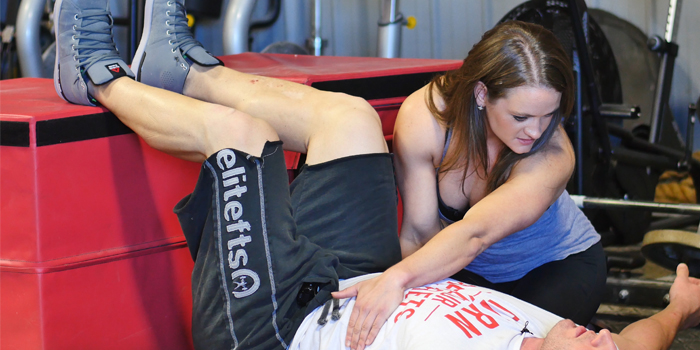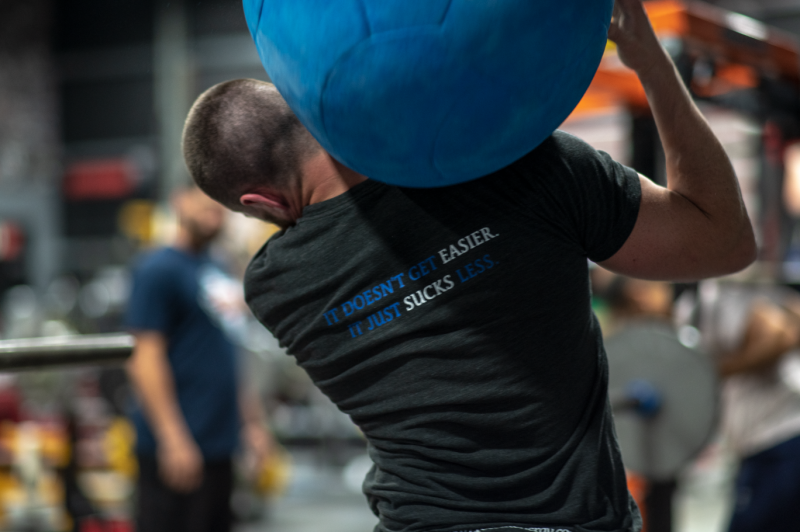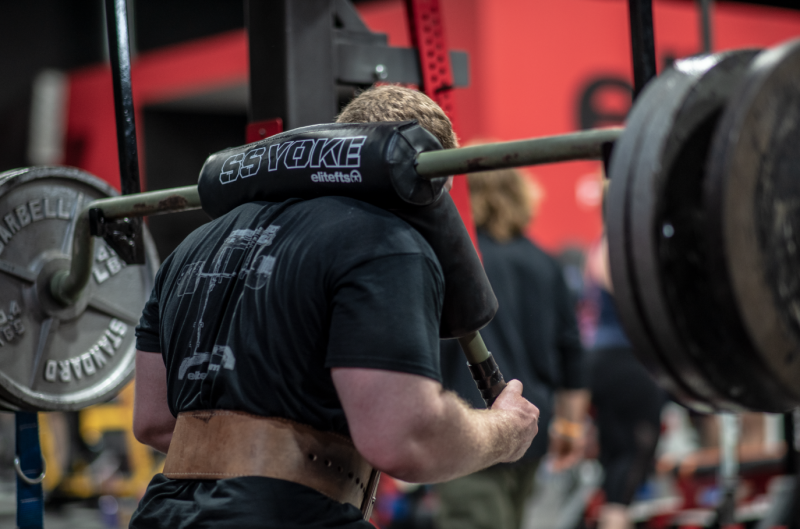
If I had anticipated what working with Casey in late 2015 to early 2016 to fix his “anterior pelvic tilt” would do to my internet footprint in powerlifting, I would have done quite a few things differently. Actually, I think I would have framed that entire sequence differently. I keep getting emails and questions about asymmetries, “hip shift in a squat,” and emails saying, “I think my anterior pelvic tilt is causing all of my issues.”
RECENT: The Best Advice I Can Give to Future Physical Therapists
I love seeing people dig in and learn, but part of my struggle with writing and educating is the role of overgeneralizing simply because “X study says this squat technique favors this lever,” or “so and so posted the best thing for knee pain” (because yes, clearly, all knee pain stems from the same issue). Case studies are helpful for a few things, namely to see the application of principles that we read about in all of the studies or that people want to make cute Instagram posts about. But they also lead to generalizations that—although the information is certainly one piece to consider—are likely not “THE” root of what you have going on. You learn from them, not repeat them, and you need to take personal variability (such as morphology, bone structure, training history, and injury history) into account.
Here’s what I’d reframe from the start:
- As much as technique is critical, having absolutely the same rep to rep with perfect symmetry is highly unlikely. In fact, studies lately have been leaning toward the need to decrease immediate “hyperanalysis,” for lack of a better word. That’s not freedom to be less picky: it means that slight variations exist in the bar path within your session. Stop freaking out. You are going to have days where it seems like out of the blue, your squat just feels weird and totally abnormal for you.
- The “anterior pelvic tilt” is an incredibly simplified way of saying what I saw with Casey. We move in three planes. When I gave him the full explanation of what I was seeing in relation to his hamstring length and position (which inherently alters mechanical stress), his way of understanding it was that his left pelvis was tipped forward and his ribs were flared, leading to a decrease in mechanical stability (bracing) on a lengthened hamstring. This is the tip of the iceberg—I could go into what was happening on his right side and why I took him into a quadruped right glute exercise to address the pelvis position, but it’s losing the point of all of this: We are absolutely complex beings with inherent asymmetry (replace this word with “preference” or “habit”) who receive proprioceptive information ALL DAY LONG (likely within some degree of that preference!), and when it comes to lifting, maintaining good patterns really doesn’t have to be that complicated.
I told myself I wasn’t going to get super nerdy, but there has to be an understanding of this with at least some degree of intellectual honesty:
We are not the same, left and right sides, starting with our diaphragm and ribcage, which are kind of a big deal when it comes to determining how the rest of our body moves. We rarely stop to appreciate just how different things like the central tendon size, leaflet size, and opposition of the heart/liver affect our preferences for how we shift or stabilize our center of gravity. I can practically feel eyes glazing over as I’m writing this.
This asymmetry may manifest more or less depending on the day, movement, or compensatory pattern avoidance at the expense of soft tissue in more than just an up/down, left/right, and forward/backward sense, as it very likely is a combination of some degree of all three in that we are “tri-planar” (meaning, we move in three planes) but seldom in isolation when doing something functional. We think tri-planar, but even that is too boxy sounding; truly… we lack (and need) fluidity and movement.
I’m not going to sit here and “theorize” over whether or not certain muscles have higher EMG activity at one specific point in a range, or circle jerk about whether or not someone fits int a specific pattern or not. You’re here to get stronger, more resilient, and learn.
As powerlifters (or anyone with a barbell on his or her back), we’re constantly putting a symmetrical object on a slightly asymmetrical body. That may or may not be a “huge” nit-pick-worthy deal, depending on who you are and how you feel. When we move functionally, there’s almost always some degree of tri-planar motion going on, somewhere. And yet with barbell training, we’re essentially trying to get as tight as we can, irradiate the entire body, and then… move. We consistently teach our mildly asymmetrical, fluid, mobile bodies to “lock down, but move weight totally symmetrically.” Maybe that works okay up to a certain percentage, but at some point, there’ll be some give and take in the system somewhere. And we wonder why barbell athletes have a somewhat limited “healthy” shelf-life.
I also said that maintaining good patterns really doesn’t have to be that complicated, and I meant it. Unilateral work is the single best way to “strengthen the weak things contributing to bad patterns,” but the benefit goes FAR beyond just trying to fix what you perceive as broken.
From a neuromuscular patterning perspective, if you’re looking a little shifty, if you’re feeling aches and pains on your competition movements, if you want a longer shelf life, if you want to move more efficiently, if you want to feel athletic instead of “locked in” all of the time, you need to think about your movement patterns with a few different variables:
- Category A: Basic proficiencies, appropriate ranges. Think basic patterns here (lunge/squat/hinge/carry/pull/press). Dr. Rusin drives this functionally HARD for a reason.
- Category B: Planes of motion (Front/back, left/right, clockwise/counterclockwise).
- Category C: Location of weight (front rack, back rack, unilaterally loaded suitcase or front rack, bilateral, or unilateral overhead).
Patterned integration to alternating, reciprocating: this is the money spot. Pick ONE variable from each category, and modify consistently doing different things left and right. Alternating lunges are one of my favorite examples to use for this, but categorizing movements as above yields plenty of variability for a body that’s designed FOR variability—to keep us out of our “locked-down” state where shifts, aches, etc., start to develop.
Really, what you’re doing here is accounting for movement variability. The fact that we are inherently a bit “preferenced” to one direction or another furthers the appreciation for the need to move, especially when a good portion of our training is done on two legs, asking the body to move symmetrically. Get your body dissociating upper and lower movements, left and right, and start rotating in a trunk/core that you spend enough time stiffening.

Coaches, one of the best things you can do is ASK your athletes what they proprioceptively sense/feel when they perform a competition movement, or maybe what they “don’t” feel. Maybe one shoulder has a hard time fully locking into bench, or perhaps it rolls forward off the chest. Maybe your athletes feel more connected to the floor on one leg during the squat. Incorporate ONE integration-based movement at the end of the session, not to build “strength” so much as to simply start to integrate some proprioceptive movement. An athlete cannot strengthen what he or she can’t even find.
Athletes, take note and pay attention to some of these same details. Where do you feel most of your weight stabilized? How “grounded” do you feel to whatever surface you’re on (either the floor or a bench) from day to day? Does one glute just feel like it’s not quite the same as the other?
I will almost guarantee that promoting good, functional movement beyond ONE plane (think static reverse lunges) will lead to a happier nervous system and improved movement quality overall. We’re built to move in three planes, and our training demands us to lock into one position. Finish sessions with some alternating, reciprocating, rotational movements, taking your time with them. After even a few weeks of consistently moving outside of your regular, low-level (think, basic lunge) patterns, you will move and feel better. I rarely promise things on the internet. I’m pretty confident about this one.
Anecdotally… for those of you more interested, one of my very first articles that elitefts published dove into this more. I wrote this only a few months after graduating from PT school, and in the previous years, I have only come to understand and appreciate this information more.
- Correcting Asymmetries: Unilateral Work Versus Integration
- Motor Patterning and PRI — Finding Solutions to Hip Shift and Dysfunctional Movement
I’ve simplified and clarified a LOT of the same principles I use clinically with my own training and with my online coaching clients.
Any questions, please feel free to reach out. If you’ve been doing what conventional knowledge tells you to do to fix an issue (like a different squat variation) with sub-par results, it may be because that body of knowledge is a textbook and you, my friend, are real life with a sensitive nervous system, movement patterns, training history, injury history, and likely at least some change in what movements and ranges are actually permissible for your body. I’m always here to answer questions, as my personal email is available in my column bio.











